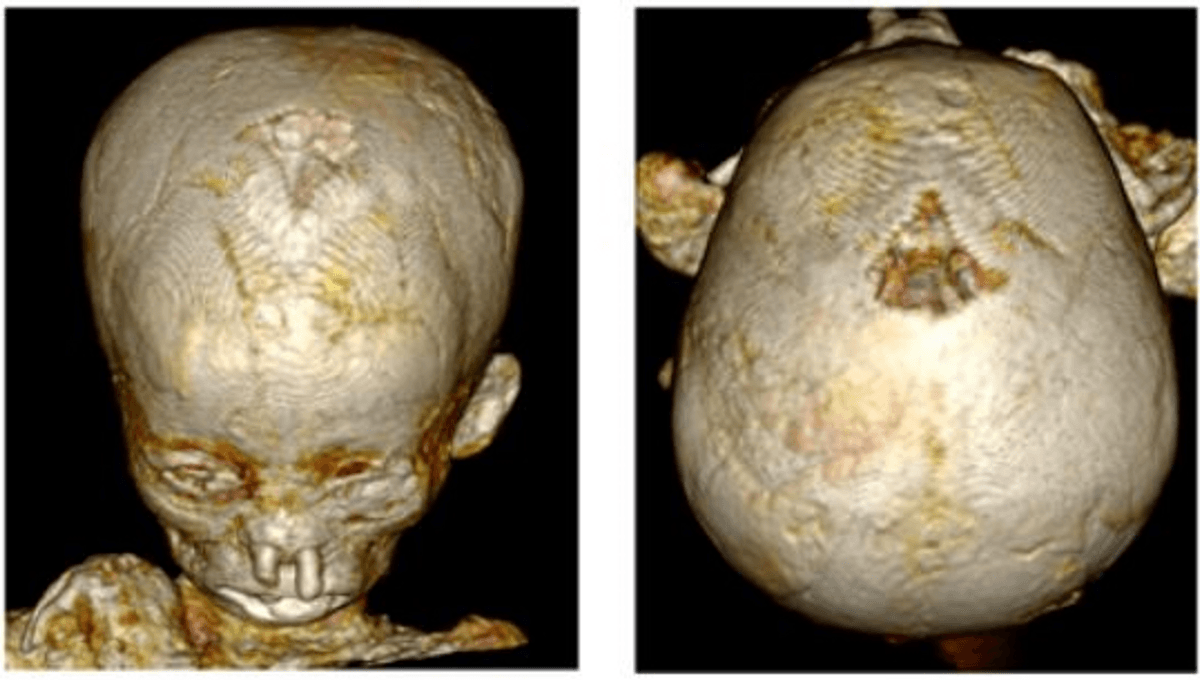
Childhood in Ancient Egypt was something of a mixed bag, with some kids enjoying the luxury of becoming Pharaoh before turning ten while others struggled with iron deficiency and poorly oxygenated blood. According to a new analysis of child mummies, anemia was a common problem for the Egyptian youth, leading to high rates of skeletal defects and possibly sending some kids to the afterlife before their time.
Anemia is a condition that is defined by a lack of healthy red blood cells and therefore a deficiency of hemoglobin. Ultimately, this means the blood is unable to carry enough oxygen to meet the body’s demand.
To determine the prevalence of the disorder among leathery antique kids, researchers examined 21 ancient Egyptian child mummies using a technique called whole-body computed tomography. This allowed them to identify skeletal abnormalities commonly associated with anemia, such as an enlargement of the cranial vault, which is the part of the skull that contains the brain.
The mummies’ age at death ranged from one year to roughly 14 years. Overall, seven – or 33 percent – of the ancient volunteers displayed pathological enlargement of the cranial vault, indicating that they probably suffered from anemia.
However, most of those who had the disorder can consider themselves lucky in comparison to one of the specimens, who appears to have been born with an array of genetic abnormalities that doomed him from the moment Ra created him.
Noticing an excess of bone marrow throughout the boy’s skull and facial bones, the study authors say he probably suffered from a congenital condition called thalassemia. Caused by an inability to produce hemoglobin, the disorder can now be successfully treated with blood transfusions and chelation therapy.
However, such remedies were obviously unavailable in the ancient world, leading the researchers to believe the youngster probably experienced “severe anemia and skeletal changes that result from the expansion of the bone marrow.” They also note that untreated thalassemia patients may be susceptible to “growth retardation, pallor, jaundice, poor musculature, hepatosplenomegaly, masses developed from extramedullary hematopoiesis, and early death, often in childhood.”
As if that weren’t enough, the same individual was also found to have an unusually large tongue. According to the researchers, this may be evidence of another genetic condition called Beckwith-Wiedemann syndrome, which causes the enlargement of certain body parts.
It’s therefore little surprise that the unfortunate sprog lasted no more than a year and half before descending to the underworld, with thalassemia being “the most probable cause of death.”
Regarding the lucky children who suffered only from anemia, the study authors say the prevalence of the condition may have been linked to risk factors “such as decreased iron intake due to malnutrition; chronic gastrointestinal blood loss and decreased absorption, both caused by parasites; and inflammation caused by chronic infections.”
Malaria is another potential contributor to anemia, and was prevalent in Ancient Egypt.
Despite this evidence, however, the researchers say it remains “unclear whether [these children] died due to anemia, due to a combination of diseases, or due to another reason and with anemia.”
The study is published in The International Journal of Osteoarchaeology.
Source Link: Ancient Egyptian Child Mummies Show High Rates Of Anemia